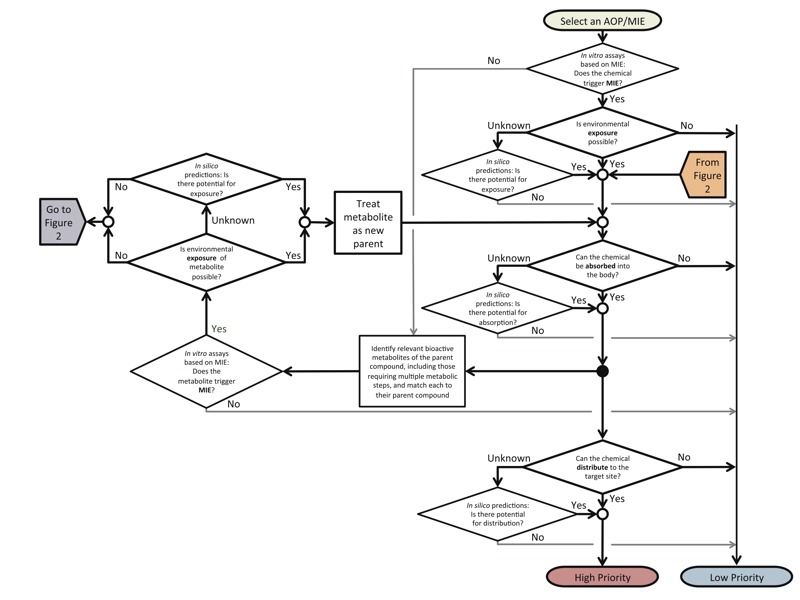Figure 1.

Workflow for including exposure and ADME considerations into the AOP framework. The chemical of interest is a parent compound. Exposure, absorption, distribution, and metabolism are considered for the parent compound, and distribution of a known metabolite of an identified parent compound (described in Figure 2) is considered if the parent exhibits exposure and absorption potential. Each step is evaluated based on available data. When insignificant, the chemical is classified as “low priority.” If any step results in an unknown effect, further research is needed (i.e., high-throughput follow-up studies). “High-priority” chemicals should be further ranked according to relationships among rates of absorption or distribution, activating or detoxifying metabolic processes, and excretion from a biological system. Open circles represent converging steps in the workflow, and solid black circles represent diverging steps.
